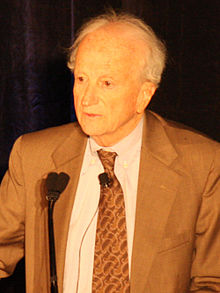Division solution
With the approach of the sharing solution from his work "Investment in Human Capital: A Theoretical Analysis", Gary Becker deals with the implications of human capital investments by employees. He uses the assumptions of the principal-agent theory . Gary Becker was an American economist and received the 1992 Nobel Prize in Economics "for his extension of microeconomic theory to a wide range of human behavior and human collaboration."
Non-contractable interaction situations
Contractability is defined as the verifiability of e.g. B. a performance of the agent before a third party (e.g. courts). In the case of non-contractable interaction situations, incentive contracts, as is otherwise common in the principal-agent theory , are not possible. Very few contractually regulated agreements are possible if there is non-contractability. The incentives must be designed in such a way that neither the principal nor the agent has an incentive to deviate from the contract.
A distinction is made between two cases: on the one hand, non-contractable work (includes both input and output) and, on the other hand, the acquisition of non-contractable company-specific human capital (this only increases productivity in the current company, but not in another). An important aspect is that these benefits are non-contractable, but observable. The problem of non-contractability leads to incomplete employment contracts, as these cannot be made dependent on results. It is only possible to draw conclusions from the observations for the next period.
"In non-contractable interaction situations, stable agreements must be self-enforcing, i. H. they must have equilibrium properties in the sense of non-cooperative game theory . "
The solution approaches for the acquisition of company-specific human capital are the division solution according to Gary Becker and, for incomplete employment contracts, efficiency wages and relative performance tournaments .
Division solution
Gary Becker was an American economist; In his work "Investment in Human Capital: A Theoretical Analysis" he writes about human capital investments by employees and their effects.
Model assumptions: the wage is contractable, the specific investment in human capital is non-contractable. The employee / agent (used synonymously) can be terminated in any period. This is a two-period model, in period 1 the agent can invest in his company-specific human capital (hereinafter: human capital). In period 2 the marginal product of labor (see also: marginal product of labor ) of the agent is increased immediately, provided that the agent has invested in his human capital.
Of course, the agent would like to be better rewarded in period 2 for his knowledge acquisition and increased productivity. There is the possibility of two-sided opportunism: if the agent makes progress with his knowledge acquisition in period 1, the employer / principal no longer has any incentive to increase the agent's wages in period 2. This is possible because of the non-contractibility problem. This problem results in a hold-up problem between the principal and the agent.
As soon as the agent has invested in his human capital, the principal is able to siphon off a quasi-pension from this investment. The quasi-pension corresponds to the difference between the increased marginal value product of the agent's work and the agent's alternative wage (wage in another company). However, this is anticipated by the agent and so the agent would not invest in his human capital in the first place.
According to Becker's split solution, the agent is already demanding a higher wage in period 1 and a further wage increase in period 2, after having acquired more human capital. In this way, the "costs and returns of the specific human capital investment and thus also the quasi-pension [...]" are shared between the principal and the agent.
If both parties advance, the agent's wage in period is - . Where corresponds to the alternative wage and the wage in period 1 of the agent. The principal's wages are: - , where corresponds to the wages to be paid to the agent and denotes the marginal value product of the agent's work. In period 2, the agent's wage is then - , where the wage in period 2 corresponds. For the principal, the wage in period 2 is defined as follows: - .
As long as it is contractually stipulated and both > , > , and > apply, there is no incentive for the agent to deviate nor the principal. This avoids the hold-up problem.
literature
- Matthias Kräkel: Organization and Management 5th edition. Mohr Siebeck, Tübingen 2012, ISBN 978-3-16-151977-2
- Hans-Gerd Ridder: Personalwirtschaftslehre 3rd edition. Kohlhammer, Stuttgart 2009, ISBN 978-3-17-020882-7
- Gary Becker: Investment in Human Beings. In: The Journal of Political Economy. No. 70, 1962, pp. 9-49






